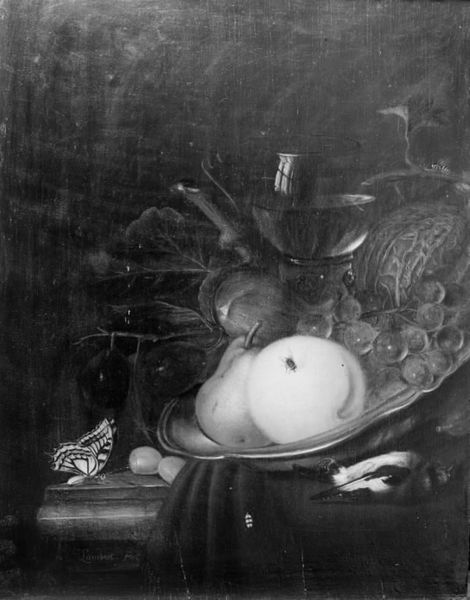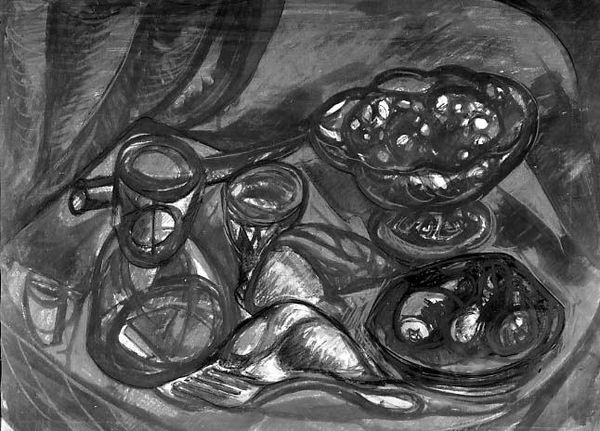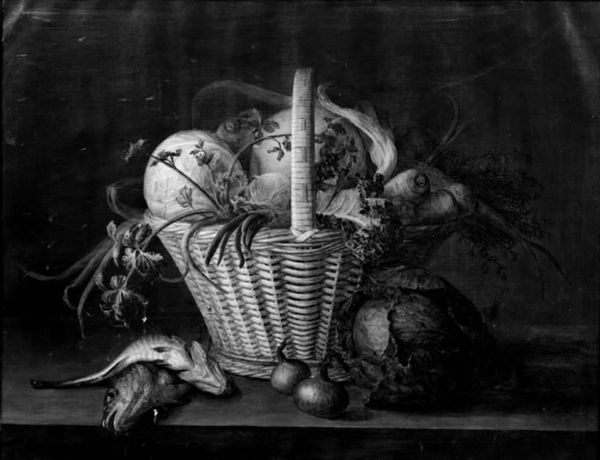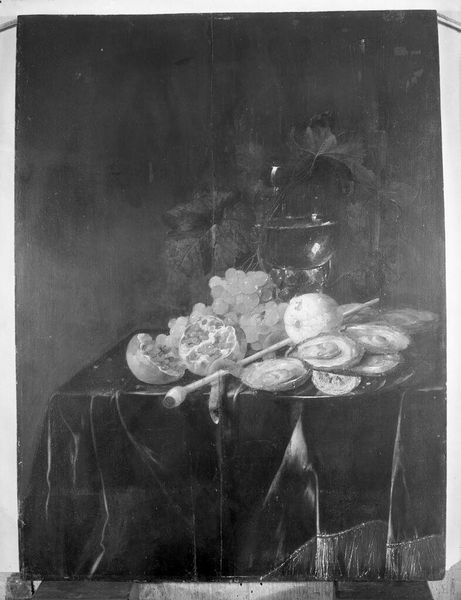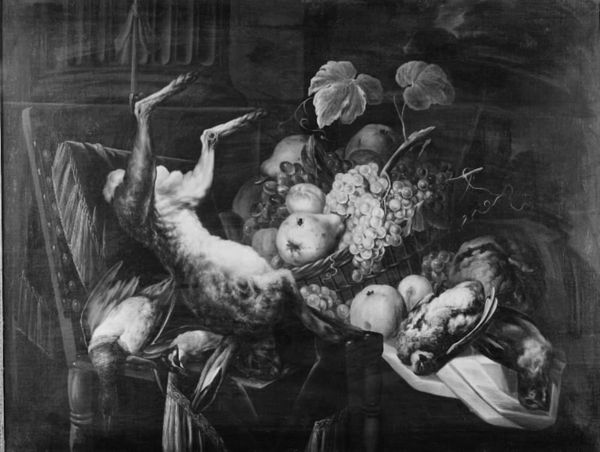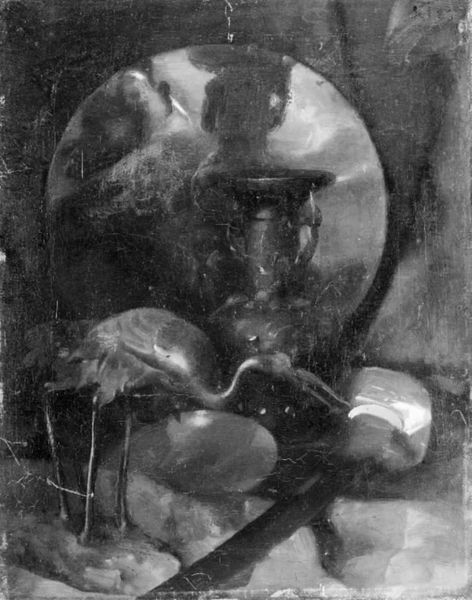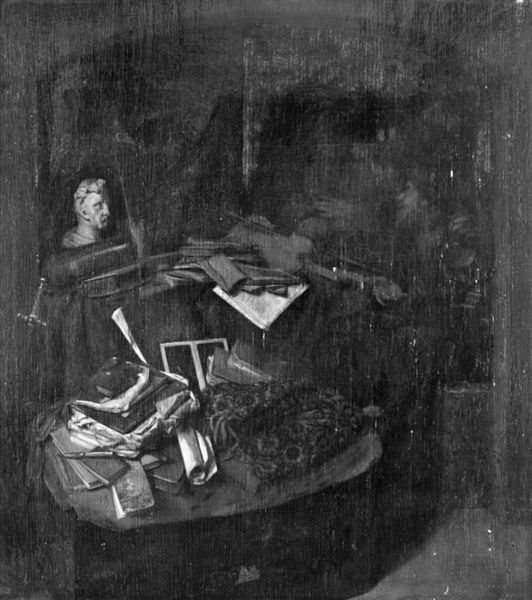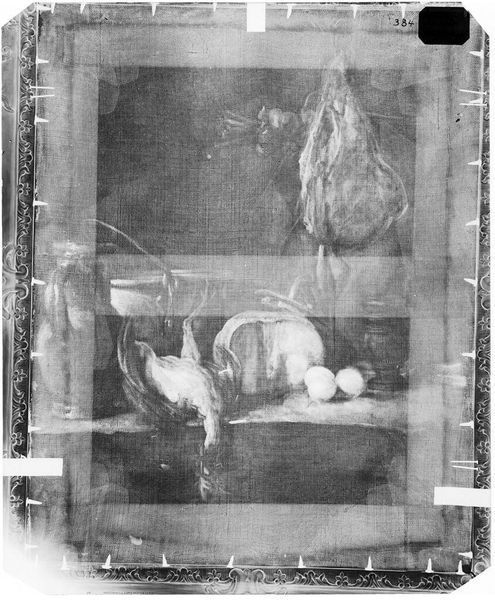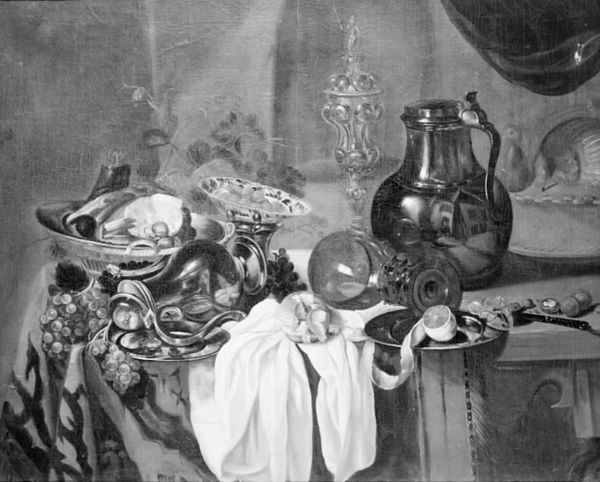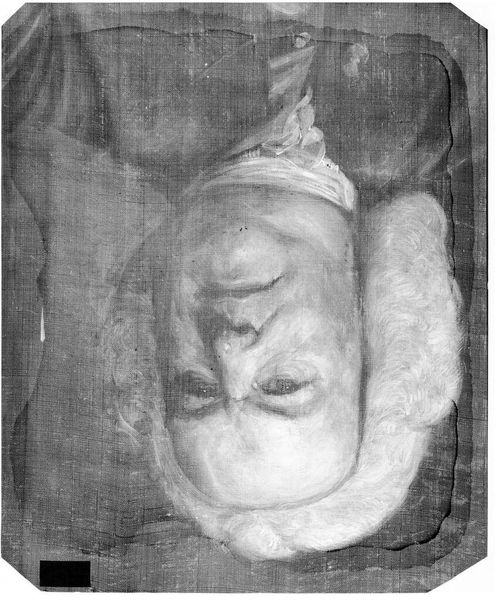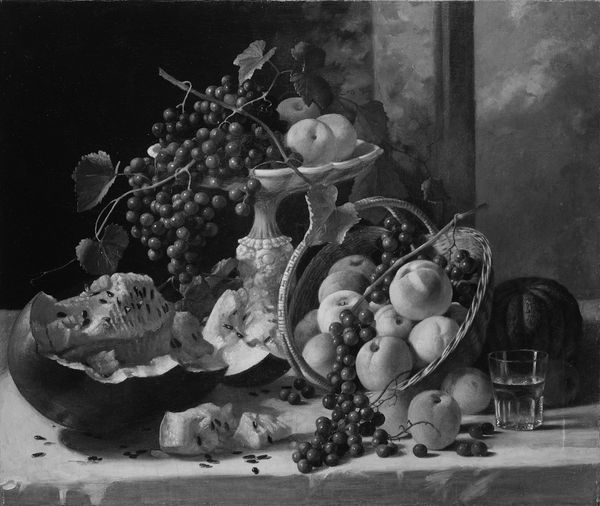
painting, oil-paint, wood
#
baroque
#
painting
#
oil-paint
#
black and white
#
monochrome photography
#
wood
#
monochrome
#
monochrome
Dimensions: 41.5 cm (height) x 32 cm (width) (Netto)
Curator: So, what do you think of this old painting? "Nature morte med hummer og citron" is how it's listed here at the SMK, though I think that just translates to "Still Life with Lobster and Lemon," and it was probably painted sometime between 1645 and 1690. It's attributed to Lambert van Haven, but it’s also just wood covered in oil-paint. Editor: Initially, it looks stark. This monochrome palette strips away the vibrancy one might expect from a baroque still life, leaving a somber mood instead. Curator: Isn't it funny how we expect all old art to have that dusty, antique air? Maybe van Haven really wanted that simple, black and white drama? All that shimmering fruit—the dark, empty oysters next to the glimmering curves of that huge lobster. You think he knew it would look like this eventually, this eerie, aged vision? Editor: Possibly. Looking closer, one can see how Van Haven deployed the severe contrast to draw attention to compositional elements. The arrangement of the fruit and the lobster create dynamic lines, pushing your eye from left to right and subtly inviting a semiotic reading related to consumption. Curator: A 'semiotic reading related to consumption' – oh my god, what a fancy way of saying rich people liked to eat well. All the details – each one of these perfect things piled on top of the other to try to show off, aren't they? Even the humble snail makes an appearance down there in the bottom left corner like "Don't forget about me!" Editor: Yet, there's more here than conspicuous display. That snail crawling precariously at the edge of the composition underscores a reflection on temporality and decay. It’s a constant Baroque theme that serves as an admonition in the face of life's ephemeral nature. Curator: Maybe! It really makes me wonder about van Haven, doesn't it? Who was he painting this for? What did it all mean back then, you know, when it was still... shiny? Editor: The absence of color encourages us to think more critically about structure and underlying message rather than immediate sensory pleasure. It really encourages you to dive beneath the immediate surface. Curator: In a way it shows more about the painting as it exists now in front of us, as opposed to what Van Haven wanted it to look like almost four hundred years ago, huh? Okay, not bad for an old lobster.
Comments
No comments
Be the first to comment and join the conversation on the ultimate creative platform.
